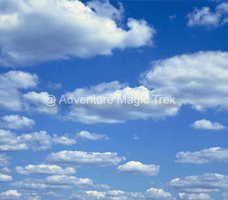
24 Hours Support Call
+977-9841570317 (Shankar Pandey)
email:info@adventurehikenepal.com
National Parks & Wildlife Reserves in Nepal
Chitwan National Park
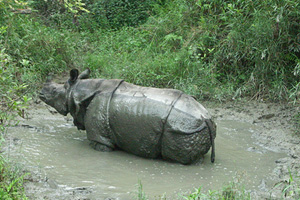 Nepal's first and most famous national park is situated in the Chitwan Doon or the lowlands of the Inner Terai. Covering an area of 932 sq km. the park includes hilly areas of the Siwalik Range covered by deciduous sal forest. One fifth of the park is made up of the floodplains of the Narayani, Rapti, and the Reu Rivers and is covered by dense tall elephant grass interspersed with riverine forests of silk cotton (kapok), acacia and sisam trees. This ecologically diverse area is the last remaining home in Nepal for more than 300 of the endangered Asian one-horned rhinoceros and harbours one of the largest populations of the elusive and rare Bengal tiger. Besides rhino and tiger, Chitwan also supports a great variety of flora and fauna. There are four species of deer, including the spotted chittal, leopard, sloth bear, wild boar, rhesus monkey, grey langur monkey, wild dog, small wild cats, the white stockinged gaur (the world's largest wild cattle) and many other smaller animals. The swampy areas and numerous oxbow lakes of Chitwan provide a home for marsh crocodiles. In a stretch of the Narayani river is found one of the few remaining populations of the rare and endangered fish-only eating gharial, or Gangetic crocodile. Here also is found one of the world's four species of freshwater dolphins. For the ornithologist and the amateur bird-watcher the park offers excellent possibilities with more than 450 species recorded. Some of the resident specialities are several species of woodpeckers, hornbills, Bengal florican, and red-headed trogons. Winter birds such as waterfowl, Brahminy duck, pintails and bareheaded geese, amongst many other cold weather visitors are drawn by the sanctuary of the park's rivers. In the summer the forest is alive with nesting migrants such as the fabulous paradise flycatcher, the Indian pitta and parakeets.
Nepal's first and most famous national park is situated in the Chitwan Doon or the lowlands of the Inner Terai. Covering an area of 932 sq km. the park includes hilly areas of the Siwalik Range covered by deciduous sal forest. One fifth of the park is made up of the floodplains of the Narayani, Rapti, and the Reu Rivers and is covered by dense tall elephant grass interspersed with riverine forests of silk cotton (kapok), acacia and sisam trees. This ecologically diverse area is the last remaining home in Nepal for more than 300 of the endangered Asian one-horned rhinoceros and harbours one of the largest populations of the elusive and rare Bengal tiger. Besides rhino and tiger, Chitwan also supports a great variety of flora and fauna. There are four species of deer, including the spotted chittal, leopard, sloth bear, wild boar, rhesus monkey, grey langur monkey, wild dog, small wild cats, the white stockinged gaur (the world's largest wild cattle) and many other smaller animals. The swampy areas and numerous oxbow lakes of Chitwan provide a home for marsh crocodiles. In a stretch of the Narayani river is found one of the few remaining populations of the rare and endangered fish-only eating gharial, or Gangetic crocodile. Here also is found one of the world's four species of freshwater dolphins. For the ornithologist and the amateur bird-watcher the park offers excellent possibilities with more than 450 species recorded. Some of the resident specialities are several species of woodpeckers, hornbills, Bengal florican, and red-headed trogons. Winter birds such as waterfowl, Brahminy duck, pintails and bareheaded geese, amongst many other cold weather visitors are drawn by the sanctuary of the park's rivers. In the summer the forest is alive with nesting migrants such as the fabulous paradise flycatcher, the Indian pitta and parakeets.
Entry Fee Per Person Per Day:
For Nepalese Nationals, Rs. 20/-
For SAARC Nationals, Rs. 200/-
For Other Foreign Nationals, Rs. 500/-
Access:
Chitwan is easily accessible from Kathmandu, being well connected by a national highway to Bharatpur and to Sauraha. There are daily fights from October through May to Meghauli airstrip just outside the park boundary. Another exciting alternative is a two to three day raft trip down the Trishuli river to Narayanghat or directly into the western edge of the park.
Visitors can stay in one of the several lodges and camps inside or outside the park. Visitors can actively participate in exciting stalks through the forest looking for animals signs. One unique Chitwan experience is elephant back safaris in search of the one-horned rhinoceros, leopard, deer, bear, monkey and crocodile. Few visitors can ever forget the excitement of crashing through 20 feet high elephant grass and sightseeing wildlife. Apart from elephant safaris, the traveller will be happily occupied for several days with nature walks, canoe rides down the park rivers, and land-over drives through the forest. Top
Bardiya National Park
 The Bardia National Park is situated on the eastern banks of the Karnali river, about 400 kms. west of Kathmandu. The park is 968 sq kms. in area and extends from the Churia hills southward to the gentle slopes of the "Bhabhar'. The higher grounds of the Churia have dry deciduous forest of mostly hardwood sal. The porous slopes of the Bhabhar support large open grasslands known locally as 'Phantas'. These are some of the last remaining grasslands that once covered much of the Gangetic plains.
The Bardia National Park is situated on the eastern banks of the Karnali river, about 400 kms. west of Kathmandu. The park is 968 sq kms. in area and extends from the Churia hills southward to the gentle slopes of the "Bhabhar'. The higher grounds of the Churia have dry deciduous forest of mostly hardwood sal. The porous slopes of the Bhabhar support large open grasslands known locally as 'Phantas'. These are some of the last remaining grasslands that once covered much of the Gangetic plains.
The western end of the Bardia is bounded by numerous water-ways of the Karnali which have created many large and small gravel islands. These islands and much of the lower ground area covered by a mosaic of grassland and riverine forest of acacia, sisam and the large buttressed silk cotton trees. In spring, the silk cotton blooms and the forest comes alive with scarlet flowers.
Bardia is the home of a wide variety of animals, many of which live in and around the Phantas. These open grasslands such as Baghora and Lamkoili are the best places to view animals. The most conspicuous of which is the spotted deer. Other ungulates include black buck, hog deer, samber deer, wild boar and barasingha or swamp deer. Two species of monkeys, the langur and the rhesus macaque are also present. The park is famous for its small herds of wild elephants which are rarely seen. The park also boasts a small population of the rare gharial, the marsh mugger crocodile and the Gangetic dolphin. The island of the Karnali river harbours the sub-continent's largest antelope species, the nilgai or blue bull. The Karnali and Babai rivers attract a large number of wintering waterfowl along with resident species such as herons, kingfishers and wall creepers. More than 350 bird species have been recorded in Bardia, truly a bird watcher's paradise.
Entry Fee Per Person Per Day:
For Nepalese Nationals, Rs.20/-
For SAARC Nationals, Rs. 200/-
For Other Foreign Nationals, Rs. 500/-
Access:
To reach Bardia, take the daily flight or public bus from Kathmandu to Nepalgunj, from where it is a five hour drive to the park office at Thakurdwara. This nature sanctuary is best visit form October to April.Top
Langtang National Park
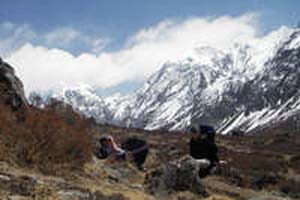 Langtang is one of the most unspoiled national parks of Nepal. Situated North of Kathmandu, it is the most easily accessible highland sanctuary from the capital. Langtang covers 1,710 sq. km. forming the upper catchment areas of two of Nepal's largest river systems - the Trishuli and Koshi. There is great latitudinal variation, starting at 1,500 m. and ascending to the top of Mt. Langtang Lirung at 7,234 m. As a result the park has immense ecological diversity. Some of the most attractive areas of the park include the Langtang Valley, the holy lakes at Gosainkunda, and the forested hillsides above the village of Helambu.
Langtang is one of the most unspoiled national parks of Nepal. Situated North of Kathmandu, it is the most easily accessible highland sanctuary from the capital. Langtang covers 1,710 sq. km. forming the upper catchment areas of two of Nepal's largest river systems - the Trishuli and Koshi. There is great latitudinal variation, starting at 1,500 m. and ascending to the top of Mt. Langtang Lirung at 7,234 m. As a result the park has immense ecological diversity. Some of the most attractive areas of the park include the Langtang Valley, the holy lakes at Gosainkunda, and the forested hillsides above the village of Helambu.
The deep gorges of Bhote Koshi and Langtang Khola are thickly forested with rhododendron, oak, maple and alder. The stretch of forest around Ghoda Tabela in the lower Langtang Valley and below Gosainkunda is inhabited by the red panda, a rare and threatened symbol of a healthy Himalayan ecosystem. Other animals, common to these forests are wild boar, Himalayan black bear, ghoral, grey langur monkey and leopard. The rare Himalayan hony guide has been sighted here and the park is also the home for Impeyan, Tragopan and kalij pheasants among others. Larch, a rare deciduous conifer, is also found in the forest of lower Langtang Valley. Further up, Himalayan tahr, musk deer and snow leopard can be found. The upper Langtang Valley is one of he few known breeding grounds of the ibils bills besides the Tibetan snow cock and snow partridge.
Like other Himalayan nature parks, Langtang has to be explored on foot. There are several possible trails to choose from depending on preference and time available. The langtang Valley is easily approached from Dhunche town and park office, which is a day's drive from Kathmandu. The upper reaches of Langtang can be reached in four days of easy walking, however, it is advisable to spend a few days around the forest at Ghoda Tabela to watch for the red panda. Once above Langtang village and the monastery at Kyangin, visitors can explore the high valley of Langshisa Yala peak and Tsero, Ri. These and other villages of upper Langtang are inhabited by people of Tibetan descent whereas the villagers of Dhunche, Bharkhu and Syabru further down are home to the Tamangs of Nepal's middle hills.
Entry Fee Per Person Per Entry:
For Nepalese Nationals, Free
For SAARC Nationals, Rs. 100/-
For Other Foreign Nationals, Rs. 1,000/-
(Note: Entrance fee not required for children under 10 years).
Access:
The high pass out of Langtang, Gang la(5,132 m), can be negotiated only by well prepared hikers with guides, food and camping equipment. The Gosainkunda can also be reached in a few days from Dhunche, making it possible to visit both areas in the same outing.
Alternatively, trekkers can hike to Gosainkunda from Sundarijal in the Kathmandu Valley via the picturesque villages of Helambu. The richly forested route that climbs steeply from here to Thare Pati and Gopte Cave is alive with birds and flowering rhododendron and orchids in the spring. Tourists can visit the Langtang National Park anytime from March to November but it is best to avoid the monsoon season because of rains and overflowing rivers. The nature enthusiast on the other hand might find the rainy season ideal because of the profusion of plant life. Top
Shey Phoksundo National Park
 Shey Phoksundo is Nepal's largest national park and covers 3,555 sq. km. Sitting astride the Dolpa and Mugu districts of western Nepal, the park was established to protect the trans-Himalayan ecosystem found only in few areas of the Kingdom. The unique park includes the Kanjiroba Himal, with many peaks of over 6,000 meters, as well as the famous Shey Monastery, the Phoksundo Lake and the Langu Gorge.
Shey Phoksundo is Nepal's largest national park and covers 3,555 sq. km. Sitting astride the Dolpa and Mugu districts of western Nepal, the park was established to protect the trans-Himalayan ecosystem found only in few areas of the Kingdom. The unique park includes the Kanjiroba Himal, with many peaks of over 6,000 meters, as well as the famous Shey Monastery, the Phoksundo Lake and the Langu Gorge.
The flora of the area include pine, walnut, willow, oak, poplar and cypress in the lower southern parts. In the higher reaches, pine, spruce, juniper and birch pre-dominate. The alpine areas are vegetated by berberries, wild rose and caragana. The and trans-Himalayan mountains and grassy alpine meadows to the north are almost devoid of trees but have caragana and dwarf juniper.
The wildlife of Shey Phoksundo include a good popula-tion of blue sheep and ghoral, musk deer, leopard, wild dog, wolf, marmot, weasel, mouse hare, rhesus and langur monkeys. The higher reaches and the haunt of the elusive snow leopard. The adjoining Tibetan region is home to such rare animals as the great Tibetan sheep, Tibetan wild ass, Tibetan gazelle and antelope, and wild yak. Bird species of the park include the Impeyan and cheer Pheasant, chough, raven, Tibetan snow cock, Tibetan twit, brown dipper, Himalayan griffon and lammergeier. The park is inhabited by people of Tibetan descent who follow the pre-Buddist Bon religion and some of the main villages are Ringmo, Pugmo, Salclang, Kugun, and Tatgaun. On the august full moon all Dolpa villagers converge on the Shey (Crystal) Mountain in a festival to walk around the holy peak three times in as many days.
Entry Fee Per Person Per Entry:
For Nepalese Nationals, Free
For SAARC Nationals, Rs. 100/-
For Other Foreign Nationals, Rs. 1,000/-
Access:
The nearest airstrip is at Juphal, south of the park. Visitors can also fly to Jumla from where it is a 10 day hike to the Phoksundo and Shey areas. The best time to visit this park is from April to November. Top
Sagarmatha National Park
 Unique among natural heritage sites world-wide is the Sagarmatha National Park, which includes Mt. Everest (8,848 m) and other high peaks such as Lhotse Shar, Cho Oyu, Ama Dablam, Pumori, Kangtega, Gyachung Kang, Thamserku and Kwangde. Located North-east of Kathmandu, Sagarmatha National Park is 1,148 sq km. in area and consists of the upper catchment areas of the Dudh Koshi, Bhote Koshi and the Imja Khola rivers. Much of the park lies above 3,000m. Sagarmatha is rugged, with deep gorges, glaciers and unnegotiable ice and rock faces. Locally known as the 'Khumbu', it is the home of the famous Sherpa people. The Sherpas make a living by farming barley and potatoes and graze their yaks in high altitude pastures. Young Sherpas have also made their name in mountaineering and the trekking industry has of late become the community's economic mainstay. In 1979 the park was declared a World Heritage Site.
Unique among natural heritage sites world-wide is the Sagarmatha National Park, which includes Mt. Everest (8,848 m) and other high peaks such as Lhotse Shar, Cho Oyu, Ama Dablam, Pumori, Kangtega, Gyachung Kang, Thamserku and Kwangde. Located North-east of Kathmandu, Sagarmatha National Park is 1,148 sq km. in area and consists of the upper catchment areas of the Dudh Koshi, Bhote Koshi and the Imja Khola rivers. Much of the park lies above 3,000m. Sagarmatha is rugged, with deep gorges, glaciers and unnegotiable ice and rock faces. Locally known as the 'Khumbu', it is the home of the famous Sherpa people. The Sherpas make a living by farming barley and potatoes and graze their yaks in high altitude pastures. Young Sherpas have also made their name in mountaineering and the trekking industry has of late become the community's economic mainstay. In 1979 the park was declared a World Heritage Site.
Trees such as rhododendron, birch, blue pine, juniper and silver fir are found up to an altitude of 4,000 meters above which they give way to scrub and alpine plants. In late spring and summer, the hillsides around the villages of Namche Bazaar, Khumjung, Thyangboche and Thame are a riot of colours with several species of rhododendon in bloom. Wildlife most likely to be seen in Sagarmatha are the Himalaya tahr, ghoral, musk deer, pikka (mouse hare) weasel and occasionally jackal. Other rarely seen animals are Himalayan black bear, wolf, lynx and snow leopard. Birds commonly seen are Impeyan pheasant, blood pheasant, snow cock, snow pigeon, red billed and yellow billed chough, Himalayan griffin vulture and lammergeier.
Entry Fee Per Person Per Entry:
For Nepalese Nationals, Free
For SAARC Nationals, Rs. 100/-
For Other Foreign Nationals, Rs. 1,000/-
Access:
All of Khumbu is road-less, all travel and exploration must be undertaken on foot. Quick access are by helicopter at the Syangboche and via the Lukla airstrip from where the park head-office at Namche Bazaar is a two-day walk. Alternative approaches are from Jiri in the south-west and through Arun Valley in the south-east. Namche is 10 to 12 days trek on both these approaches. The best time to visit is in October and November and from March to May when days are warm and clear. However night temperatures can reach zero levels. A two to three-week stay in the park is ideal and the best areas to visit are Gokyo Valley, Lobuche-Kala Pattar-Base Camp, Chukung Valley and Thame valley. Travellers should come with camping, food and fuel support to enable them to move freely although room and board are available in most villages. To enjoy the visit thoroughly it is best to arrange services of guides and porters with government registered outfitters in Kathmandu. Top
Makalu Barun National Park
 The park and conservation area is situated in the Sankhuwasabha and Solukhumbu districts, bordered by the Arun River on the east, Sagarmatha (Mt. Everest) National Park on the west, the Nepal-Tibet border on the north and Saune Danda (ridge) to the south. The Park covers 2,330 sq. kms.
The park and conservation area is situated in the Sankhuwasabha and Solukhumbu districts, bordered by the Arun River on the east, Sagarmatha (Mt. Everest) National Park on the west, the Nepal-Tibet border on the north and Saune Danda (ridge) to the south. The Park covers 2,330 sq. kms.
This is the only protected area in Nepal with designation of a Strict Nature Reserve. It has some of the richest and most unique pockets of plants and animals in Nepal, elsewhere lost to spreading human habitation. Stepping up the slopes are a series of vegetation zones starting with tropical sal forest below 1,000 m. elevation: subtropical schima-castanopsis forest at 1,000-2000 m. fir, birch, rhododendron forests in the sub-alpine(3,000-4,000 m); and herbs, grasses and rhododendron/juniper shrubs in the alpine pas trues (4,000-5,000 m). There are 47 varieties of orchids, 67 species of bamboos, 15 oaks including Arkhoulo, 86 species of fodder trees and 48 species of primrose. Over 400 species of birds have been sighted in the Makalu-Barun area, including two species never before seen in Nepal the spotted wrenbabbler and the olive ground warbler. Wildlife includes the endangered red panda, musk deer, Himalayan black bear, clouded leopard and possibly snow leopard, in addition to more substantial populations of ghoral, thar, wild boar, barking deer, Himalayan marmot and weasel, common langur monkey and the serow. The Arun river system contains 84 varieties of fish.
Entry Fee Per Person Per Entry:
For Nepalese Nationals, Free
For SAARC Nationals, Rs. 100/-
For Other Foreign Nationals, Rs. 1,000/-
Access:
To reach Makalu-Barun National Park & Conservation Area, take the daily flight from Kathmandu to Lukla, Phaplu, Lamidanda, Bhojpur and Tumlingtar. Visitors choice to fly any one air link airports then trek. Top
Shivapuri National Park
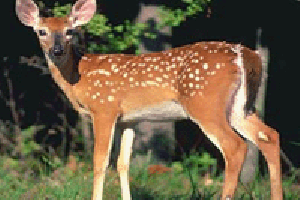 Popular as trekking, hiking and recreation area, the Shivapuri National Park offers the nearest retreat away from the hubbub of city life. The park was established as a Watershed and Wildlife Reserve in 1976. the park was declared as national ark in 2003 for the protection of its unique natural adornments. Vegetation varieties in the park include its 129 species of mushrooms while animals include 19 speces of mammals include beer, leopard, deer, wild boar, wildcat and langur monkey. The park also boasts of 177 species of birds and 102 species of butterflies.
Popular as trekking, hiking and recreation area, the Shivapuri National Park offers the nearest retreat away from the hubbub of city life. The park was established as a Watershed and Wildlife Reserve in 1976. the park was declared as national ark in 2003 for the protection of its unique natural adornments. Vegetation varieties in the park include its 129 species of mushrooms while animals include 19 speces of mammals include beer, leopard, deer, wild boar, wildcat and langur monkey. The park also boasts of 177 species of birds and 102 species of butterflies.
Entry Fee Per Person Per Entry:
For Nepalese Nationals, Rs.10/-
For SAARC Nationals, Rs. 100/-
For Other Foreign Nationals, Rs. 1,000/-
(Note: Entrance fee not required for children under 10 years).
Access:
Only 12 kilometers away from Kathmandu, the gateway to Shivapuri National Park is Budhailkanta which is 15 to 20 minutes drive away from the city. Another option is via Sundarijal which is about 30 to 45 minutes drive from Kathmandu. From both Budhanilkantha and Sundarjal, the park equires tekking uphill. Yet another way to reach Shivapuri is by driving till Kakani from where the park is an hour trek away. Top
Khaptad National Park
 Khaptad, Nepal's newest park area, is in the middle hills of the Far-West of the country. The 225 sq kms. area of the park is situated where the districts of Bajhang, Bajura, Doti and Achham meet. Khaptad is plateau of grassland and forest cover at an elevation of about 3,000 meters. The mixed conifer and broad-leaf forests are an excellent example of the vegetation that once covered much of west Nepal's middle hills. The forest consists of a mixture of tall fir, yew, rhododendron, oak, dense strands of bamboo and smaller shrubs. This habitat provides good cover for bear, leopard, barking and musk deer, as well as birds like the Impeyan, koklas and kalij pheasants. This park is special because it represents one of the few remaining mid-mountain ecosystems in Nepal Himalaya. At the north-eastern corner of the park, a small serene lake and swampy area called Khapted Daha is religious site where Hindu pilgrims come to worship Shiva on the full moon of July-August each year. Here lived the ascetic, the Khaptad Baba, who was known and revered throughout Nepal.
Khaptad, Nepal's newest park area, is in the middle hills of the Far-West of the country. The 225 sq kms. area of the park is situated where the districts of Bajhang, Bajura, Doti and Achham meet. Khaptad is plateau of grassland and forest cover at an elevation of about 3,000 meters. The mixed conifer and broad-leaf forests are an excellent example of the vegetation that once covered much of west Nepal's middle hills. The forest consists of a mixture of tall fir, yew, rhododendron, oak, dense strands of bamboo and smaller shrubs. This habitat provides good cover for bear, leopard, barking and musk deer, as well as birds like the Impeyan, koklas and kalij pheasants. This park is special because it represents one of the few remaining mid-mountain ecosystems in Nepal Himalaya. At the north-eastern corner of the park, a small serene lake and swampy area called Khapted Daha is religious site where Hindu pilgrims come to worship Shiva on the full moon of July-August each year. Here lived the ascetic, the Khaptad Baba, who was known and revered throughout Nepal.
Entry Fee Per Person Per Entry:
For Nepalese Nationals, Free
For SAARC Nationals, Rs. 100/-
For Other Foreign Nationals, Rs. 1,000/-
Access:
The easiest access is to fly to Dipayal or Chainpur or Sanfebagar or Kolti from where it is a few days hike to the national park. It is also possible to drive to Silgadi from Dhangadi. The best time to visit Khaptad is in March and April and in October and November. Travellers should hike with camping equipment, food and guides, arranged through trekking agents in Kathmandu. Top
Rara National Park
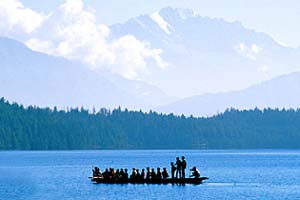 Situated about 370 km. north-west of Kathmandu, Rara is Nepal's smallest and most scenic national park covers 106 square km. Much of the park is at an altitude of about 3,000 meters forested by conifers. The park was established in 1976 and protects some of the most beautiful alpine and sub-alpine ecosystems of the Himalaya. The centrepiece is the pristine Lake Rara, also Known as Mahendra Tal, the biggest lake in Nepal. The lake is surrounded by richly forested hills, Chuchemara Danda at 4,087 meters is the best vantagepoint to get stunning views of the lake and the thickly forested hillsides and the snow-capped peaks around it. Other summits in the park area are Ruma kand (3,731 m.) and Malika Kand (3,444 m.), situated to the north of the lake.
Situated about 370 km. north-west of Kathmandu, Rara is Nepal's smallest and most scenic national park covers 106 square km. Much of the park is at an altitude of about 3,000 meters forested by conifers. The park was established in 1976 and protects some of the most beautiful alpine and sub-alpine ecosystems of the Himalaya. The centrepiece is the pristine Lake Rara, also Known as Mahendra Tal, the biggest lake in Nepal. The lake is surrounded by richly forested hills, Chuchemara Danda at 4,087 meters is the best vantagepoint to get stunning views of the lake and the thickly forested hillsides and the snow-capped peaks around it. Other summits in the park area are Ruma kand (3,731 m.) and Malika Kand (3,444 m.), situated to the north of the lake.
Rara comes within the catchment area of the Karnali River, one of the three main river systems of Nepal. The habitat supports animals like the red panda, black bear, yellow-throated martin, ghoral, serow and musk deer. There have also been reported sightings of leopard and wolf. The lake attracts migrant wildfowl like teals, pochards and mallards. Resident birds include the Impeyan, kalij and blood pheasant as well as others like the chukkor partridge.
Entry Fee Per Person Per Entry:
For Nepalese Nationals, Free
For SAARC Nationals, Rs. 100/-
For Other Foreign Nationals, Rs. 1,000/-
Access:
The easiest way to get to Rara is by flying to Jumla or Kolti from Kathmandu via Nepalgunj, followed by a three-day hike to the park office at Hutu. The alternative route is to take a bus from Nepalgunj to Surkhet, from where it is a weeks' hike to the park. Visitors should travel with camping gear and guides which will offer them the flexibility to explore Rara where basic accommodation is available only at the park office. The best time to visit the region is from February to April and in October and November. Top
Koshi – Tappu Wildlife Reserve
/strong> National Park
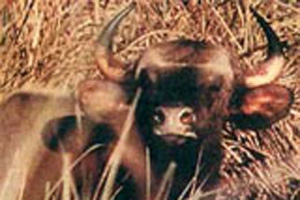 Koshi Tappu Wildlife Reserve lies on the flood plains of the Sapta-koshi in Saptari and Sunsari districts of eastern Nepal. The Reserve covers 175 sq. kms and was established in 1976.
Koshi Tappu Wildlife Reserve lies on the flood plains of the Sapta-koshi in Saptari and Sunsari districts of eastern Nepal. The Reserve covers 175 sq. kms and was established in 1976.
Rapid and complete inundation of the reserve to depths ranging from 10 to 300 cm. occurs during the monsoon. The Sapta-Koshi river also changes its course from one season to another. The vegetation is mainly tall Khar-pater grassland with a few patches of Khair-sisso, scrub forest and deciduous mixed riverine forest.
The reserve offers important habitat for a variety of wildlife. The last surviving population (about 100 individuals) of Wild Buffalo or Arna are found here. Other mammals occurring here are hog deer, wild deer, spotted deer and blue bull.
The reserve also assists the local economy by providing fishing permits and allowing the collection of edible fruits and ferns in season.
A total of 280 different species of birds have been recorded in the reserve. These include 20 species of ducks, 2 species of ibises, many stroks, egrets, herons and the endangered swamp partridges and Bengal floricans. The endangered Gharial, Crocodile and Gangetic dolphin have been recorded in Koshi river.
Entry Fee Per Person Per Day :
For Nepalese Nationals, Rs. 20/-
For SAARC Nationals, Rs. 200/-
For Other Foreign Nationals, Rs. 500/-
Access:
Koshi Tappu is easily accessible from Kathmandu, being well connected by a national highway. There are daily flights from Kathmandu to Biratnagar and road connected Biratnagar to national highway. Top
Kanchenjunga Conservation Area
 Kanchanjunga Conservation Area belt lies below Mt. Kanchanjunga. The region with its alpine grasslands, rocky outcrops, low river valleys, temperate and sub-tropical forests is situated in Taplejung district that borders with the Tibetan Autonomous Region of China. The Kanchanjunga Conservation Area has been selected as one of the 200 Global eco regions recognized by World Wildlife Fund. Ten species among Nepal’s 20 indigenous gmnosperms and 15among Nepal’s 28 endemic flowering plants are found in this region. In addition, almost 30 varieties of rhododendron species and 69 varieties of orchids are found here. The area is splashed with colours every spring with wild displays of rhododendrons, orchids, lilies, primula and other flowers. Wildlife includes endangered snow leopard, Himalayan black bear, musk deer, red panda, blue sheep and rhesus macaw. About 202 species of different birds including Impheyan pheasant, red-billed blue magpie, shy drongo are found n the area. The region can be reached via Basantapu in Dhankuta district or Birtamod in Jhapa district The area can also be reached through Dharan, which is 40 kilometres north from Biratnagar. Yet another option is to fly to Biratnagar and then to Sukhetar in Taplejung district from where the region can be trekked. Tourist facilities are available in Dharan, Dhankuta and Biratnagar.
Kanchanjunga Conservation Area belt lies below Mt. Kanchanjunga. The region with its alpine grasslands, rocky outcrops, low river valleys, temperate and sub-tropical forests is situated in Taplejung district that borders with the Tibetan Autonomous Region of China. The Kanchanjunga Conservation Area has been selected as one of the 200 Global eco regions recognized by World Wildlife Fund. Ten species among Nepal’s 20 indigenous gmnosperms and 15among Nepal’s 28 endemic flowering plants are found in this region. In addition, almost 30 varieties of rhododendron species and 69 varieties of orchids are found here. The area is splashed with colours every spring with wild displays of rhododendrons, orchids, lilies, primula and other flowers. Wildlife includes endangered snow leopard, Himalayan black bear, musk deer, red panda, blue sheep and rhesus macaw. About 202 species of different birds including Impheyan pheasant, red-billed blue magpie, shy drongo are found n the area. The region can be reached via Basantapu in Dhankuta district or Birtamod in Jhapa district The area can also be reached through Dharan, which is 40 kilometres north from Biratnagar. Yet another option is to fly to Biratnagar and then to Sukhetar in Taplejung district from where the region can be trekked. Tourist facilities are available in Dharan, Dhankuta and Biratnagar.
Entry Fee Per Person Per Entry:
For Nepalese Nationals, Free
For SAARC Nationals, Rs. 100/-
For Other Foreign Nationals, Rs. 1000/-
Access:
Fly to Sukhetar from Biratnagar and trek from there onward.Top
Annapurna Conservation Area
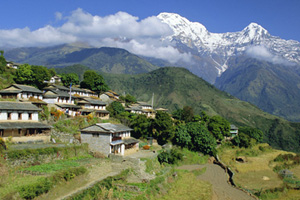 The Annapurna Conservation Area has been best trekking areas in the world. It is also the most visited trekking area in the country. The area spread around Kaski, Mustan, Managand Lamjung districts of Central Nepal. Beginning 7 metres, the area reaches as high as 8,091 metres of Mt. Annapurna.
The Annapurna Conservation Area has been best trekking areas in the world. It is also the most visited trekking area in the country. The area spread around Kaski, Mustan, Managand Lamjung districts of Central Nepal. Beginning 7 metres, the area reaches as high as 8,091 metres of Mt. Annapurna.
Ghandruk is the first experience and further down is Gorepani that provides fantastic panoramic view of the Annapurna ranges. Equally eye catching are hills of rhododendrons that blossom every spring. The turning point of the Annapurna Circuit is Jomsom. The trek southeast from Jomsom, leads to the scenic Tilicho Lake area at an altitude of 4,919 metres. In the Circuit route, is the famous Hindus religious sites Muktinath Temple. The vegetation in this region includes various species of orchids and rhododendron. Wildlife includes around 100 different kinds of mammals including rare snow leopards and blue sheep. The region also boasts of around 478 species of reptiles includingmuli-coloured Impheyan, Koklas and blood pheasants. In addition the region is also home to 39 species of reptiles and 22 species of amphibians. Best time to visit the park is between October and November.
Entry Fee Per Person Per Entry:
For Nepalese Nationals, Free
For SAARC Nationals, Rs. 200/-
For Other Foreign Nationals, Rs. 2000/-
Access:
The best gateway to the region is Pokhara is Kaski district of mid west Nepal. Pokhara is easily accessible by air or by land from Kathmandu. Another gateway to Annapurna is from Khudi of Lamjung or fly to Jomsom or Manang. Top
Shukla Phant Wildlife Reserve
 This wildlife reserve is situated in the extreme south-west of Nepal. The name of the park is derived from the largest of these grasslands which is known as Sukla Phanta. The park area is 155 sq kms. and would be 305 sq kms. after the completion of its extension. Sukla Phanta's grassland is one of the last remaining habitat for such threatened animals as the hispid hare and the pygmy hog. Besides these, Sukla Phanta is the stronghold for another endangered animal, the barasingha, or swamp deer.
This wildlife reserve is situated in the extreme south-west of Nepal. The name of the park is derived from the largest of these grasslands which is known as Sukla Phanta. The park area is 155 sq kms. and would be 305 sq kms. after the completion of its extension. Sukla Phanta's grassland is one of the last remaining habitat for such threatened animals as the hispid hare and the pygmy hog. Besides these, Sukla Phanta is the stronghold for another endangered animal, the barasingha, or swamp deer.
Other wildlife of the park included spotted deer, also seen in large numbers, hog deer, nilgai, wild dog, jack-al, porcupine and otter. The park and the adjoining for-est is the territory of small number of tigers which because of open terrain, are not uncommon to sight on the prowl. Wild elephants have also been sighted in the park.
A stop at the Rani Tal is a must. This small lake attracts birds and animals alike. Herons, ducks, storks, kingfishers and egrets vie for food and swamp deer wallow at the edges. From a nearby machan one can watch while thousands of water fowl mingle on the lake surface while it is not uncommon to see hundreds of swamp deer grazing at the water-edge in the evening light. The experience is unique.
Other ways to view wildlife in the park is by driving in landrovers near the lake and river and on nature walks with trained trackers
Entry Fee Per Person Per Day:
For Nepalese Nationals, Rs. 20/-
For SAARC Nationals, Rs. 200/-
For Other Foreign Nationals, Rs. 500/-
(Note: Entrance fee not required for children under 10 years).
Access:
There are air links Kathmandu via Nepalgunj to the nearby Mahendranagar airstrip. There is a bus service from Nepalgunj and Kathmandu. The best time to visit from October to April.Top
Dhorpatan Hunting Reserve
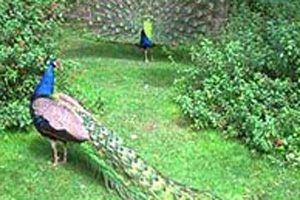 kkk Besides national parks and wildlife reserves Government of Nepal has also set aside a hunting reserve at Dhorpatan where controlled hunting of some species is allowed. Covering an area of 1,325 sq. km., the reserve is situated on the southern flanks of Mt. Dhaulangiri I (8,167 m.) in districts of Rukum, Baglung and Myagdi in western Nepal.
kkk Besides national parks and wildlife reserves Government of Nepal has also set aside a hunting reserve at Dhorpatan where controlled hunting of some species is allowed. Covering an area of 1,325 sq. km., the reserve is situated on the southern flanks of Mt. Dhaulangiri I (8,167 m.) in districts of Rukum, Baglung and Myagdi in western Nepal.
The area's vegetation is characterised by well-developed mixed-hardwood forest at lower elevation and many plant species of drier climate to the north. Tree species include fir, pine, birch, rhododendron, hemlock, oak, juniper and spruce. As in many other protected environments of Nepal, the reserve includes several villages inhabited by hill tribes as well as people of Tibetan descent who supplement farming with trade and animal husbandry. The reserve is one of the prime habitats of blue sheep, a highly prized trophy animal, which is the main target of hunters. Other game species are ghoral, serow, Himalayan tahr, black bear, pheasant and partridge. Endangered species of the area include the red panda and cheer pheasant. Controlled hunting is allowed with proper licence and certain seasons of the year. Game licence is issued by the Department of National Parks and Wildlife Conservation in Kathmandu and there are a few hunting outfitters who can make arrangements for expeditions. Besides hunting, Dhorpatan is also an attractive destination for the trekkers and wildlife enthusiasts as protection has enabled animal numbers to increase in this rarely visited area.
Entry Fee Per Person Per Entry:
For Nepalese Nationals, Rs.10/-
For SAARC Nationals, Rs. 100/-
For Other Foreign Nationals, Rs. 1000/-
Access:
Visitors can hike from Pokhara, which takes about five days, or fly to Dolpa. The best time to visit Dhorpatan is spring and autumn.Top
Manaslu Conservation Area
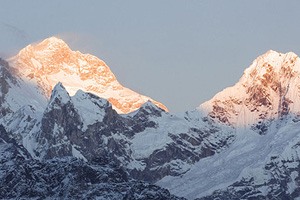 The Manaslu area in Gorkha district is a classic setting to experience pristine mountain nature and culture. With proposed plans for conserving the heritages of the area, it is also an ideal place for village tourism experience that Nepal’s famous for. The conservation area starts at 600 metres and is crowned by the eighth highest peak in the world Mt. Manaslu at 8,163 metres. The region is home to 29 species of mammals including snow leopard, musk deer and Himalayan Tahr. There are over 20 species of birds and three species of reptiles. Vegetation includes 200 species of plants, more than 50 of which are useful for various purposes.
The Manaslu area in Gorkha district is a classic setting to experience pristine mountain nature and culture. With proposed plans for conserving the heritages of the area, it is also an ideal place for village tourism experience that Nepal’s famous for. The conservation area starts at 600 metres and is crowned by the eighth highest peak in the world Mt. Manaslu at 8,163 metres. The region is home to 29 species of mammals including snow leopard, musk deer and Himalayan Tahr. There are over 20 species of birds and three species of reptiles. Vegetation includes 200 species of plants, more than 50 of which are useful for various purposes.
Entry Fee Per Person Per Day:
For Nepalese Nationals, Free
For SAARC Nationals, Rs. 200/-
For Other Foreign Nationals, Rs. 1000/-
Access:
The entrance to Manaslu Conservation area is at Arughat between Gorkha and Dhading. Arughat can be reached by bus or car in about five to seven hours from Kathmandu. Another entrance is at Daraundi in Gorkha from where the normal route can be reached hiking via Sirdiwas.Top
Parsa Wildlife Reserve
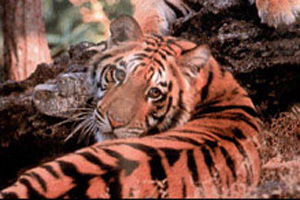 Parsa Wildlife Reserve occupies parts of Chitwan, Makawanpur, Parsa and Bara districts in central Nepal. The reserve headquarters is situated at Adabar on the Hetauda-Birgunj highway and the Reserve covers 499 sq. kms. and established in 1984.
Parsa Wildlife Reserve occupies parts of Chitwan, Makawanpur, Parsa and Bara districts in central Nepal. The reserve headquarters is situated at Adabar on the Hetauda-Birgunj highway and the Reserve covers 499 sq. kms. and established in 1984.
The dominant landscape of the reserve, the Churiya hills ranging from 750m. to 950m. run east-west of the reserve. The reserve has sub-tropical monsoon climate. The forest is composed of tropical to subtropical forest types with sal constituting 90% of the vegetation. In the Churiya hills Chir pine grows and along the stream and rivers Khair, Sissoo with silk cotton tree occur. Sabai grass a commercially important grass species grows well in the southern face of Churiya hill. The reserve supports a good population of resident wild elephant, tiger, leopard, sloth bear, gaur, blue bull, wild dog. Other common animals are sambar, chital, hogdeer, barking deer, langur, striped hyena, ratel, palm civet, jungle cat etc.
There are nearly 300 species of birds in the reserve. Giant hombill, peafowl, red jungle fowl, flycatchers, woodpeckers etc. are few other common birds found in the reserve. Many kinds of snakes like king cobra, common cobra, krait, rat snake, pythons are found in the reserve due to hot tropical climate.
Entry Fee Per Person Per Day:
For Nepalese Nationals, Rs.20/-
For SAARC Nationals, Rs. 200/-
For Other Foreign Nationals, Rs. 500/-
Access:
Parsa wildlife reserve is easily accessible from Kathmandu, being well connected by a national highway and daily flight to Simra.Top



